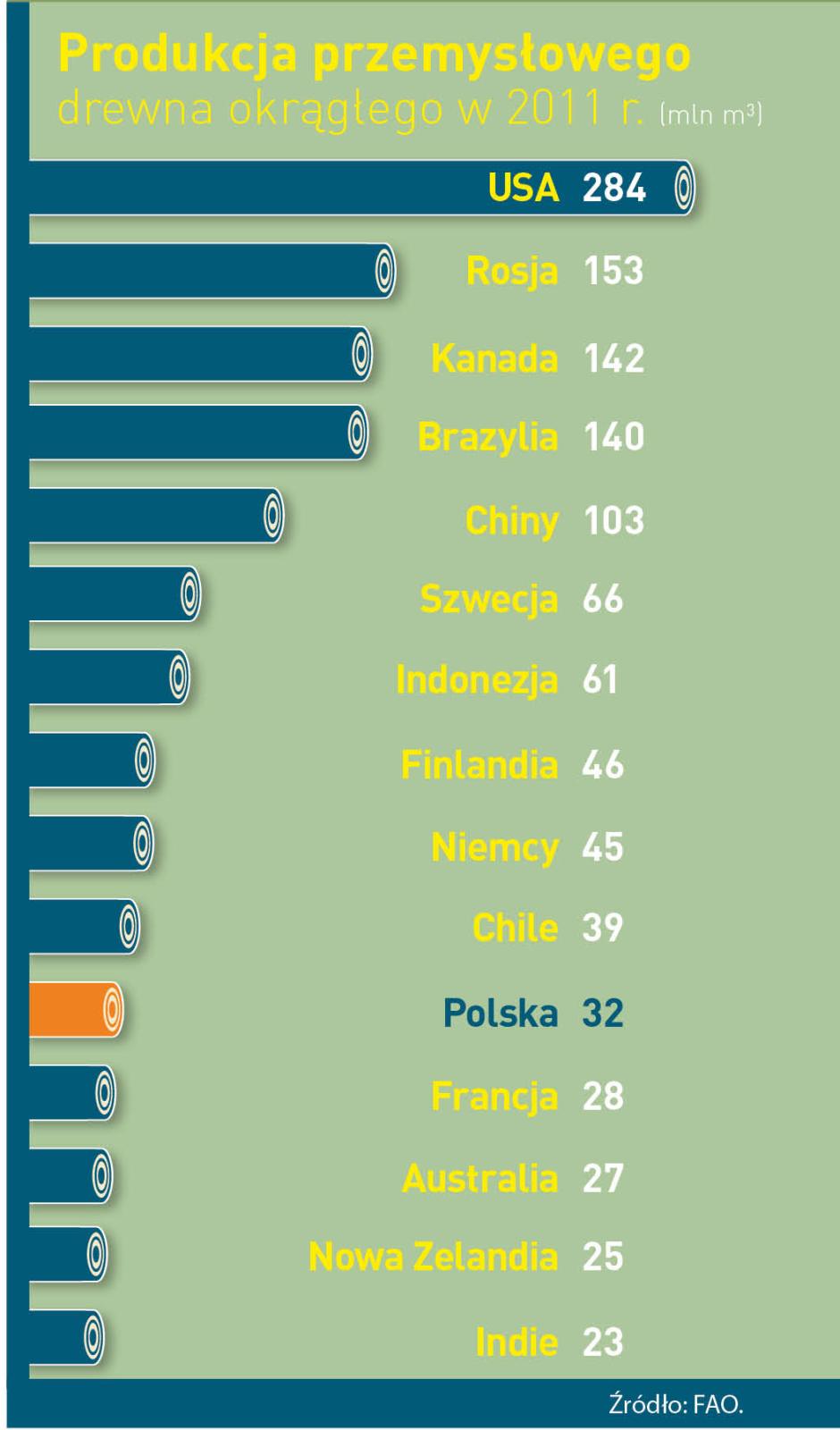 Asset Publisher
Asset Publisher
Polish hit
Polish products made of wood – furniture, window and door frames, yachts or paper and packages – these are real hits of the market.
Our country is the is the 10 largest producer of furniture and the 4 largest furniture exporter in the world. Wood industry sells abroad goods of its approximate value of 45 million zl annually, what constitutes 10 % of the whole Polish export. The measurement of the essential role of forestry and timber based sector in our management is that, it works out about 2 % of GDP (Gross Domestic Product). Not only it gives work to thousands of people, but it is also an engine of investment and of development of innovative technologies. From the beginning of transformation, it drew foreign capital of its value over 30 million zl.
Forest gives work
The State Forests belong to the leading group of employers in Poland. However, both forest and timber provide for workers with several thousand of Forestry Services Companies, which within the contract of mandate deal with, among others, planting trees and their nursing, wood logging and its transportation. And above all cooperate with people employed in several dozen thousand of companies creating wood and furniture industry and paper manufacture. Summing up, it gives as many as 375 thousand of Poles altogether. Statistically, every hundred inhabitant of our country works in the sector connected with forestry and wood processing.
Among private companies of forestry and timber based sector, there are also big companies with the share of foreign capital , and big and medium sized indigenous companies, but 9 of 10 companies in this sector are small plants employing less than 10 people. These are often family companies, cultivating multigenerational traditions connected with forestry and working in less developed regions of the country. There, forestry and wood industry, as well as agriculture constitute the basis of maintaining hundred thousand of families. As many as 600 % of all working places in the forest and wood based sector are located within rural areas.
Forest and wood based sector works out about 2 % of Polish GDP (Gross Domestic Product).
- 2 % of Polish GDP works out forest and wood based sector .
- Poland takes 4 place as the largest furniture exporter and 10 place as the largest producer of furniture.
- 50 % of paper and 9 of 10 pieces of furniture produced in Poland is exported abroad
- The value of annual export of Polish goods of wood and furniture industry and paper manufacture equals 45 billion zl (it is 10 % of the whole export).
- 30 billion zl , as direct foreign investments, have been drown since 1990 by Polish wood based sector (5,5 % of all).
- 100 kg of paper is used annually by statistic Pole (an average of UE is 160 kg, for USA – 230 kg).
Source: E. Ratajczak „Potencjał gospodarczy przemysłów opartych na drewnie i perspektywy ich rozwoju (Economic performance of wood – based industries and perspectives of their development)", GUS, Warszawa 2012.
 Asset Publisher
Asset Publisher
Nowe stanowisko zagrożonego goździka sinego
Nowe stanowisko zagrożonego goździka sinego
 Goździk siny na nowym stanowisku na terenie Nadleśnictwa Poddębice RDLP w Łodzi.
Goździk siny na nowym stanowisku na terenie Nadleśnictwa Poddębice RDLP w Łodzi.
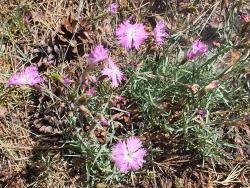 Goździk siny na nowym stanowisku na terenie Nadleśnictwa Poddębice RDLP w Łodzi.
Goździk siny na nowym stanowisku na terenie Nadleśnictwa Poddębice RDLP w Łodzi.
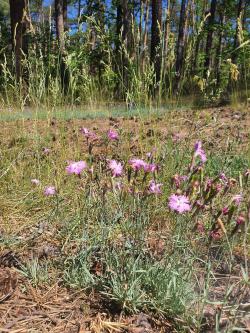 Goździk siny na nowym stanowisku na terenie Nadleśnictwa Poddębice RDLP w Łodzi.
Goździk siny na nowym stanowisku na terenie Nadleśnictwa Poddębice RDLP w Łodzi.
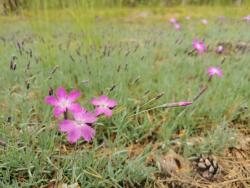 Goździk siny na nowym stanowisku na terenie Nadleśnictwa Poddębice RDLP w Łodzi.
Goździk siny na nowym stanowisku na terenie Nadleśnictwa Poddębice RDLP w Łodzi.
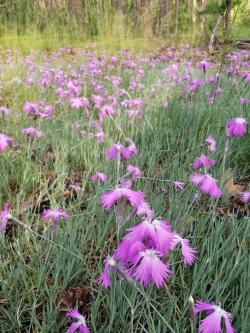 Goździk siny na nowym stanowisku na terenie Nadleśnictwa Poddębice RDLP w Łodzi.
Goździk siny na nowym stanowisku na terenie Nadleśnictwa Poddębice RDLP w Łodzi.
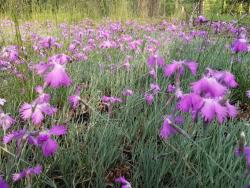 Goździk siny na nowym stanowisku na terenie Nadleśnictwa Poddębice RDLP w Łodzi.
Goździk siny na nowym stanowisku na terenie Nadleśnictwa Poddębice RDLP w Łodzi.
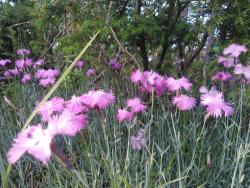 Goździk siny na nowym stanowisku na terenie Nadleśnictwa Poddębice RDLP w Łodzi.
Goździk siny na nowym stanowisku na terenie Nadleśnictwa Poddębice RDLP w Łodzi.
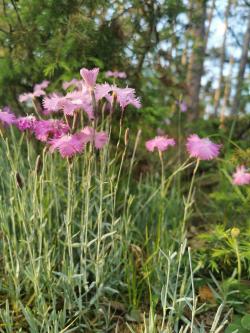 Goździk siny na nowym stanowisku na terenie Nadleśnictwa Poddębice RDLP w Łodzi.
Goździk siny na nowym stanowisku na terenie Nadleśnictwa Poddębice RDLP w Łodzi.
Leśnicy RDLP w Łodzi odnaleźli nowe, nieopisane dotychczas, stanowisko goździka sinego – gatunku zagrożonego wyginięciem.
Goździk siny Dianthus gratianopolitanus podlega ochronie ścisłej i wymaga ochrony czynnej. Wg Polskiej Czerwonej Księgi Roślin (2014) na terenie naszego kraju opisano 36 stanowisk tej rośliny. Większość z nich ma już jednak znaczenie tylko historyczne. Zostało prawdopodobnie jedynie 14. Goździk siny jest gatunkiem bardzo wrażliwym. Przegrywa konkurencję z innymi roślinami runa, ginie wskutek postępującej sukcesji, zacienienia przez warstwę podszyt i zwarcie drzewostanu, a wielokrotnie – w wyniku błędów lub nieświadomej działalności człowieka.
Na terenie RDLP w Łodzi jeszcze pod koniec XX wieku podawany był z 10 lokalizacji. Do dzisiaj, wg Czerwonej Księgi Roślin Województwa Łódzkiego, zachowało się już tylko 5. Dlatego nasze odkrycie jest tak ważne i stanowi istotny wkład do zasobów wiedzy botanicznej, nie tylko w skali regionalnej, ale i krajowej.
Stanowisko zostało odnalezione pod koniec maja, jednak z ujawnieniem informacji czekaliśmy na potwierdzenie oznaczenia gatunku przez eksperta. Po wspólnych oględzinach terenowych z botanikiem, dr hab. Marcinem Kiedrzyńskim z Wydziału Biologii i Ochrony Środowiska Uniwersytetu Łódzkiego, nie ma już żadnych wątpliwości – goździk znaleziony w Nadleśnictwie Poddębice to właśnie goździk siny Dianthus gratianopolitanus.
Znalezisko jest tym cenniejsze, że w lasach RDLP w Łodzi realizowany jest Regionalny program ochrony goździka sinego Dianthus gratianopolitanus VILL, opracowany przez botaników z Uniwersytetu Łódzkiego i Ogrodu Botanicznego w Łodzi. Uczestniczą w nim aktywnie łódzkie nadleśnictwa – te, w których jeszcze zachowały się populacje tego gatunku.
Więcej o Regionalnych programach ochrony wybranych gatunków roślin rzadkich i zagrożonych wyginięciem na terenie województwa łódzkiego można przeczytać tutaj (https://www.lodz.lasy.gov.pl/aktualnosci/-/asset_publisher/1M8a/content/ratowanie-ginacych-roslin).
Odnalezienie przez leśników nieznanego dotychczas stanowiska rzuca nowe światło i pozwala optymistyczniej patrzeć na perspektywy ochrony goździka sinego. Tym bardziej, że stanowisko to jest w tej chwili najmocniejszym w regionie łódzkim – tworzą go 4 płaty, liczące łącznie ponad 1000 pędów. Większość z nich to pędy generatywne (kwitnące i owocujące).
Populacja w Nadleśnictwie Poddębice (RDLP w Łodzi) weryfikuje też zasięg gatunku – znajduje się ponad 60 km na północ od dotychczasowych stwierdzeń goździka sinego w naszym regionie. Być może między tym stanowiskiem, a wykazywanymi w Czerwonej Księdze Roślin Województwa Łódzkiego, istnieją i trwają inne, niezidentyfikowane jeszcze kępy i płaty tej niezwykłej rośliny – Dianthus gratianopolitanus Vill.



